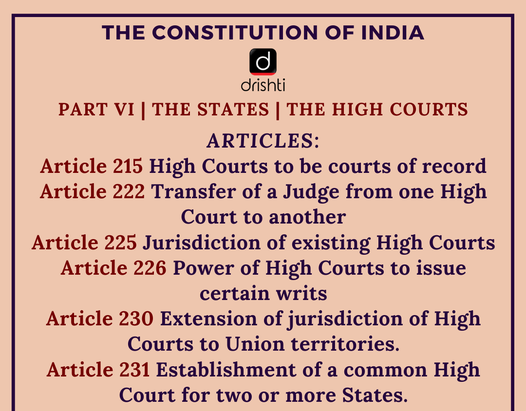Maharashtra
Inauguration of Circuit Bench of Bombay HC
- 18 Aug 2025
- 3 min read
Why in News?
The Chief Justice of India (CJI) B.R. Gavai inaugurated the new circuit bench of the Bombay High Court in Kolhapur, making it the fifth bench of the court.
Key Points
- About: The Kolhapur Bench will include a Division Bench and two Single Benches serving six districts namely, Satara, Sangli, Solapur, Kolhapur, Ratnagiri, Sindhudurg.
- The Division Bench will handle public interest litigation petitions, civil writ petitions, family court appeals, contempt appeals, and civil and criminal matters while the single Bench will hear cases including criminal revision applications, bail applications and other criminal matters.
- Significance: It will improve accessibility for citizens in the Konkan and Western Maharashtra regions.
- Bombay HC Bench Structure: One of India’s oldest Chartered High Courts, it has jurisdiction over Maharashtra, Goa, Daman & Diu, and Dadra & Nagar Haveli. It already has three main benches:
- Principal Bench in Mumbai.
- Regional Benches in Nagpur (Vidarbha) and Aurangabad (Marathwada).
- A separate Bench in Goa.
Process of Establishment of High Court Benches
- Establishment of High Court Benches: Setting up of a Bench of a High Court is considered only if a complete proposal in terms of section 51(2) of the States` Reorganisation Act, 1956 is received from the State Government concerned, including the consent of the Chief Justice of the High Court and the Governor of the State and also if it satisfies the broad guidelines and criteria recommended by the Jaswant Singh Commission.
- The State Government is responsible for providing infrastructural facilities and bearing the entire expenditure of the High Court and its Bench.
- Justice Jaswant Singh Commission: In 1981, a commission was appointed to consider demands for High Court Benches in Western districts of Uttar Pradesh.
- The commission recommended criteria including characteristics of the region, population size, area, means of travel and communication, distance for litigants, pendency rates, infrastructure availability, and legal talent.
- Supreme Court's Position: Decisions should be based on rational, not emotional, sentimental, or parochial considerations.







